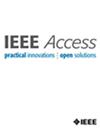Task-Ready PanNuke and NuCLS Datasets: Reorganization, Synthetic Data Generation, and Experimental Evaluation
IF 3.4
3区 计算机科学
Q2 COMPUTER SCIENCE, INFORMATION SYSTEMS
引用次数: 0
Abstract
Automating nuclei analysis in histopathology is essential for enhancing disease diagnosis; however, training reliable models necessitates well-structured datasets. This paper addresses the gap in standardized data preparation workflows for two critical histopathology datasets: PanNuke and NuCLS. First, we organize histopathology images and masks into training-validation splits, extract subsets specific to cell types, and generate multi-scale patches to enable robust model training across various resolutions using the PanNuke dataset. Second, we curate task-specific subsets for object detection and semantic segmentation, ensuring consistency across splits while addressing annotation inconsistencies with the NuCLS dataset. Third, we conduct experiments on two reorganized datasets, including cell-type-specific binary classification, multi-task evaluation, and extension to synthetic datasets. Our workflows address common histopathology data challenges, including fragmented annotations, class imbalance, and mismatched metadata. The processed datasets are shared in standardized formats, allowing researchers to train models directly for critical tasks such as detecting cancerous nuclei or segmenting inflammatory cells in histopathology images.任务就绪PanNuke和NuCLS数据集:重组,合成数据生成和实验评估
组织病理学中核分析的自动化是提高疾病诊断的必要条件;然而,训练可靠的模型需要结构良好的数据集。本文解决了两个关键组织病理学数据集:PanNuke和NuCLS的标准化数据准备工作流程中的差距。首先,我们将组织病理学图像和掩模组织到训练-验证分割中,提取特定于细胞类型的子集,并生成多尺度补丁,以使用PanNuke数据集实现跨各种分辨率的鲁棒模型训练。其次,我们为对象检测和语义分割管理任务特定的子集,确保跨分割的一致性,同时解决与NuCLS数据集的注释不一致问题。第三,我们在两个重组数据集上进行了实验,包括细胞类型特异性二元分类、多任务评估和扩展到合成数据集。我们的工作流程解决了常见的组织病理学数据挑战,包括碎片化的注释、类不平衡和不匹配的元数据。经过处理的数据集以标准化格式共享,允许研究人员直接训练模型用于关键任务,例如检测癌核或在组织病理学图像中分割炎症细胞。
本文章由计算机程序翻译,如有差异,请以英文原文为准。
求助全文
约1分钟内获得全文
求助全文
来源期刊

IEEE Access
COMPUTER SCIENCE, INFORMATION SYSTEMSENGIN-ENGINEERING, ELECTRICAL & ELECTRONIC
CiteScore
9.80
自引率
7.70%
发文量
6673
审稿时长
6 weeks
期刊介绍:
IEEE Access® is a multidisciplinary, open access (OA), applications-oriented, all-electronic archival journal that continuously presents the results of original research or development across all of IEEE''s fields of interest.
IEEE Access will publish articles that are of high interest to readers, original, technically correct, and clearly presented. Supported by author publication charges (APC), its hallmarks are a rapid peer review and publication process with open access to all readers. Unlike IEEE''s traditional Transactions or Journals, reviews are "binary", in that reviewers will either Accept or Reject an article in the form it is submitted in order to achieve rapid turnaround. Especially encouraged are submissions on:
Multidisciplinary topics, or applications-oriented articles and negative results that do not fit within the scope of IEEE''s traditional journals.
Practical articles discussing new experiments or measurement techniques, interesting solutions to engineering.
Development of new or improved fabrication or manufacturing techniques.
Reviews or survey articles of new or evolving fields oriented to assist others in understanding the new area.
 求助内容:
求助内容: 应助结果提醒方式:
应助结果提醒方式:


